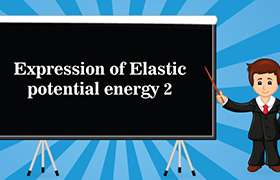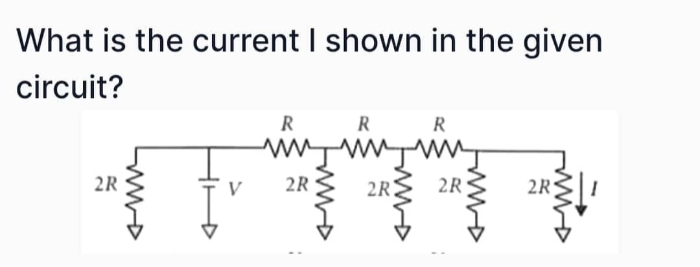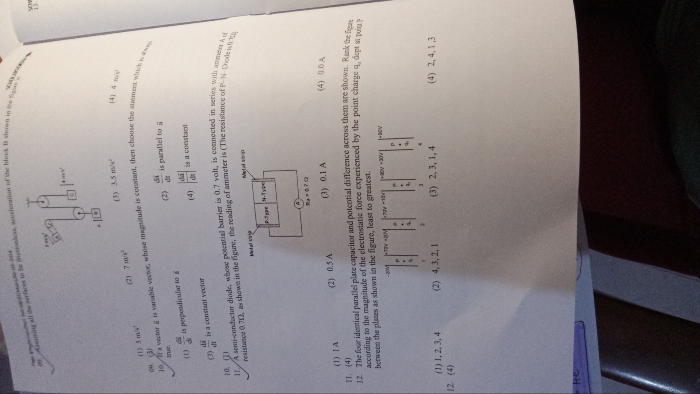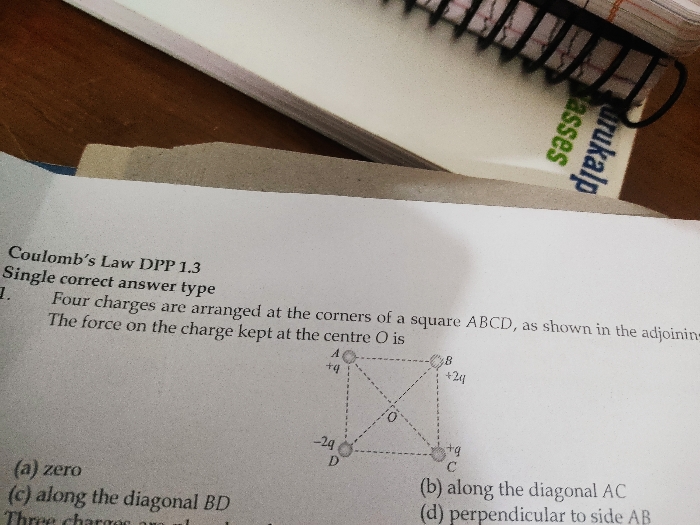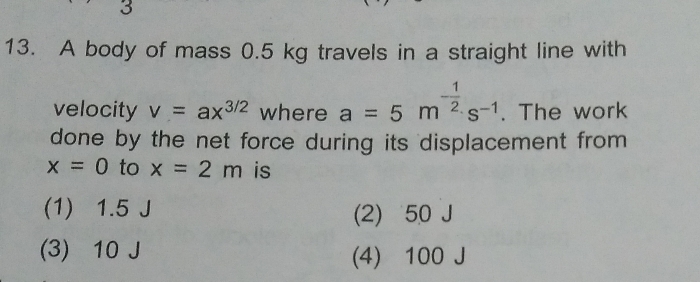JEE Class main Answered
solve
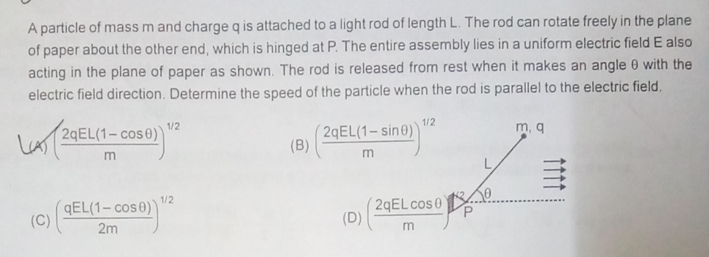
Asked by adjacentcalliber10 | 18 May, 2019, 01:17: PM
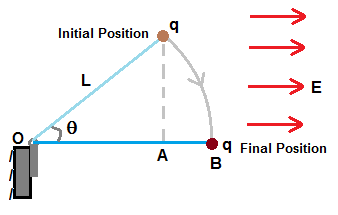
Figure shows the particle of mass m and charge q at one end of rod of length L .
Other end of rod is hinged at O so that the rod rotates freely in the plane of figure.
Direction of electric field E is as shown in figure.
From the position as shown by angle θ that is made by the rod with field direction to
the position OAB as shown in figure which is parallel to field, the particle is displaced to a
distance AB in the direction of electric field. Workdone W by the particle for this displacement is given by
W = qE×AB = q E L (1 - cosθ) .........................(1)
This workdone will be equal to the kinetic energy of particle when the rod is parallelel to field.
Hence we have, (1/2) m v2 = q E L (1 - cosθ) ........................(2)
where m is mass of particle and v is speed of particle when it reahes the position B.
hence speed of particle v is given by, v = [ 2q E L (1 - cosθ) / m ]1/2
Answered by Thiyagarajan K | 19 May, 2019, 11:55: AM
Application Videos
JEE main - Physics
Asked by arivaryakashyap | 23 Apr, 2024, 10:40: AM
JEE main - Physics
Asked by ratnadeep.dmr003 | 21 Apr, 2024, 11:06: PM
JEE main - Physics
Asked by ksahu8511 | 19 Apr, 2024, 11:55: AM
JEE main - Physics
Asked by mohammedimroz | 13 Apr, 2024, 09:48: PM
JEE main - Physics
Asked by medhamahesh007 | 02 Apr, 2024, 11:11: AM
JEE main - Physics
Asked by gundlasumathi93 | 31 Mar, 2024, 02:13: PM
JEE main - Physics
Asked by chhayasharma9494 | 31 Mar, 2024, 12:47: PM
JEE main - Physics
Asked by archithateja3 | 30 Mar, 2024, 10:23: PM
JEE main - Physics
Asked by Machinenineha | 27 Mar, 2024, 05:28: PM


